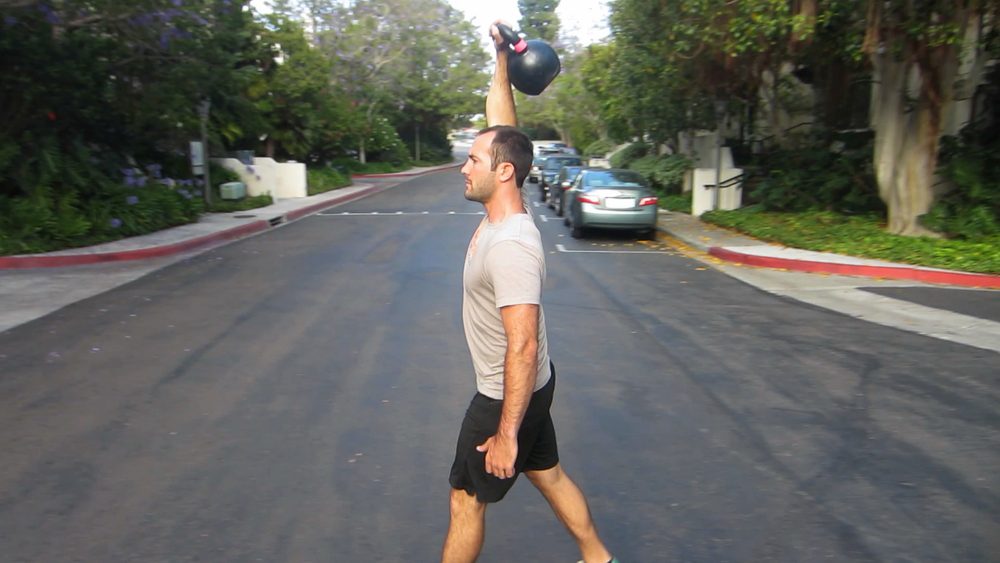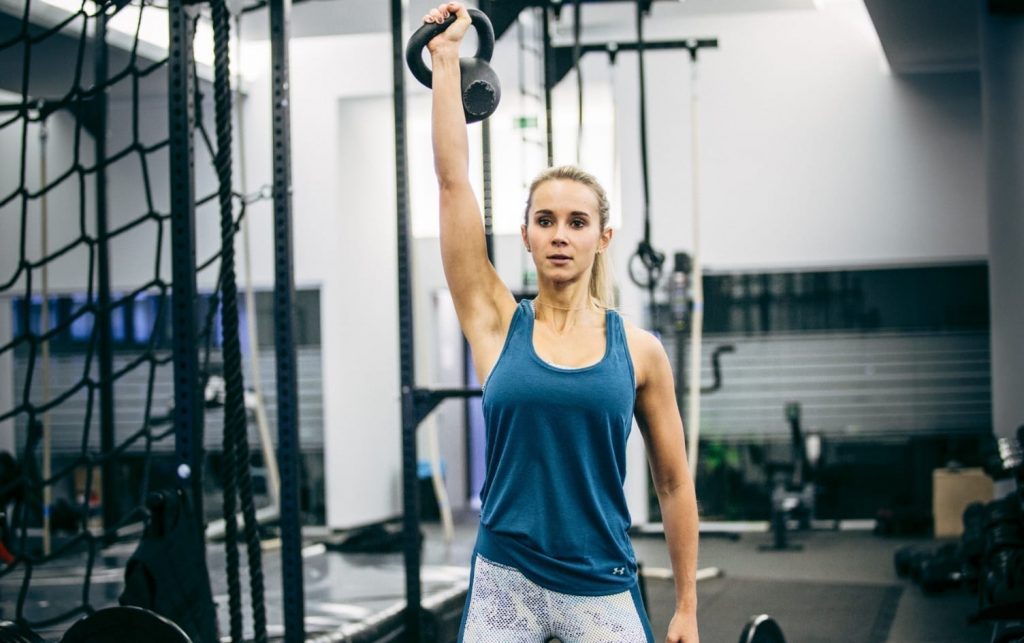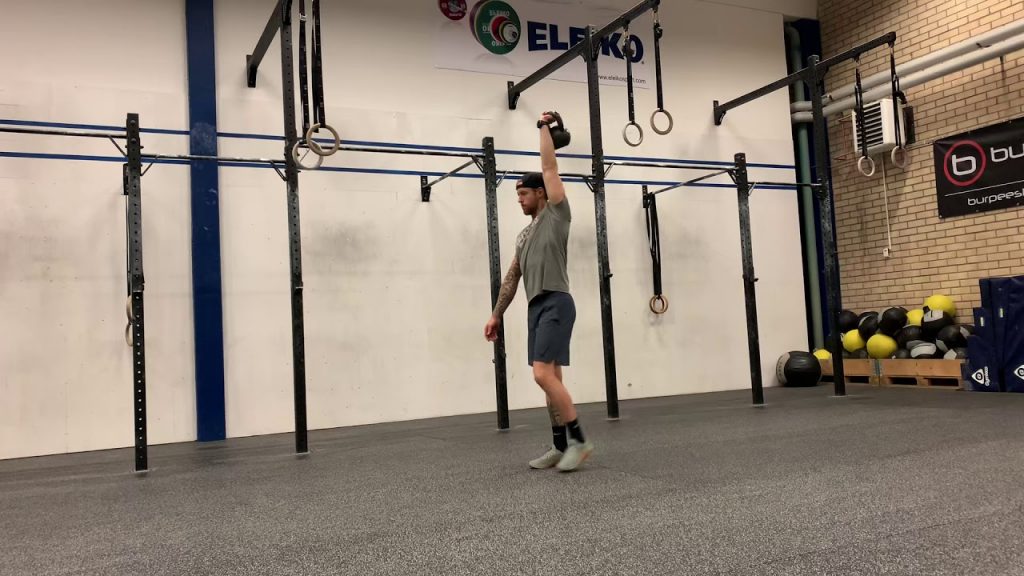
The best online fitness resource you'll ever need. We filter out the BS to ensure you meet your health and fitness goals!

The best online fitness resource you'll ever need. We filter out the BS to ensure you meet your health and fitness goals!

The waiter’s walk is amongst the best exercises going for improve shoulder stability and boosting upper body pressing strength.
It is largely isometric, though it is a multi-purpose, multi-joint exercise, that develops fantastic scapula stability.
Improving scapular stability will, of course, improve overall shoulder stability. In addition, the waiter’s walk works the deltoids significantly, an improvement in whose strength will also lead to an overall improvement in shoulder stability.
This will keep your shoulder healthier in the long run, reduce your risk from injury, and improve your shoulder strength. Most noticeably, any movements that include an overhead lockout – such as overhead, military or barbell presses – will benefit.
There is also a healthy amount of awareness, mindfulness and mind-muscle connection going on with the waiter’s walk. You will learn how to better pack the shoulder – drawing the scapula in and down, which is a vital skill for most major lifts – as well as how to brace your trunk – your core, lower back, upper back and hips. Then there is the benefit of simply holding a heavy weight above your head, standing beneath it, and showing your body what it needs to be dealing with. All carries develop your ability to maintain structural integrity under load – waiter’s walks are no different.
Waiter’s walks, like most carries, are pretty unpretentious in design. They involve simply holding a weight above your head and walking with it. This can be two weights, one in each hand, a barbell, taken in both hands, or a single weight in one hand, leaving your other free.
If you’re looking to use a barbell, go for a snatch grip and allow it to sit slightly further back from your centre of gravity than individual weights in each hand would need. Use a snatch or jerk grip.
If you’re using a single weight, aim for a kettlebell. Though dumbbells will work well, the way in which a kettlebell’s weight hangs adds a lot to the move. Kettlebells are also slightly easier to clean into position.
To perform a waiter’s walk:
Stay upright – don’t lean. This is especially important if performing your waiter’s walk single handed, as you will want to compensate by leaning over to one side. Maintain a strong core and lower back, keep your chest and eyes level, and stay calm and steady as you walk.

Your arms should also be straight over your centre of gravity. Barbells may be more comfortable a cm or two back from this, but the difference should be very minimal. If you find yourself unable to keep your arm upright, there will likely be one of two issues behind it. Either the weight is too much – drop it down until you can perform the movement comfortably, with correct form – or you need to work on shoulder mobility, which should take priority for the moment – leave waiter’s walks out of your routine until your range of motion is up to par.
Keep your hips stable, trying to walk in a straight line with an even pace and gait. If you can’t, stop to rest before carrying on, or consider dropping the weight or shortening the walk distance.
To make the movement easier or harder, you can either manipulate the weight or the distance. Going heavier and/or longer will be harder, whilst shortening your walk and/or going lighter will obviously make it easier.
There are a few different ways of getting the weight into position. For moderate loads, simply cleaning and pressing the weight from the floor will do, as will unracking it and overhead pressing it. This may also do for mid- to heavy- weights, though you may need more of a push press ending. Be wary of going too heavy. You could also try getting into position using something like a Turkish get up, adding a further stability practice and more core work into the load.
Stay mindful of your joints throughout the waiter’s walk. This is especially true of the wrists, though you will want to make sure that your shoulder is relaxed and your elbow is just shy of lockout in order to keep them safe and functioning efficiently.
For the wrist, you will want to keep it as upright and straight as possible. Don’t let the weight bow your hand backwards. Doing so will put unnecessary strain and stress into the joint and soft tissue of both your wrist and forearm, which can lead to injury.
Don’t be fooled into thinking that building up wrist and forearms strength, or using wrist straps, will be the answer. The only way to avoid long term injury is to develop and maintain good wrist posture and good mind-muscle connection.
This can be one of the main benefits of the waiter’s walk, in fact.
We’ve hinted above at some of the benefits to be gained from including waiter’s walks in your training. The mind-muscle connection and stability are big features. They train the neural pattern a lifter needs in order to properly catch and hold heavy loads above their heads, which will always be helpful for anybody to build their upper body strength.

In addition, the style of waiter’s walk you perform will bring its own benefits. For example, a single arm kettlebell walk will engage your obliques and spinal erectors in order to stabilise the trunk and shoulders. A two-handed walk will train your strength and endurance under lockout. Going separate weights in each hand will help you to stabilise through a full 360 degree range of motion; going with a barbell will help you to train through the front plane, whilst allowing for heavier loads and a good degree of core stability.
Finally, there are the benefits to be gained by all variations through the joints and muscle groups being used.
Performed properly, with a straight wrist, as mentioned above, waiter’s walks will help to strengthen the wrist and forearm. This will lead to better protection from load under lockout, and the increased muscle mass will lead to greater grip strength. It also teaches you how to begin to lockout a kinetic chain from the wrist, all the way down to the ground.
A large part of this is teaching your elbow how to properly lock out. Beginners often struggle with large overhead pressing motions – especially those engaged in Olympic lifting – as they cannot catch the weight properly through their elbows. Waiter’s walks force you to lock out.
They will also force you to engage the large muscles of your mid- to upper- back, most notably your lats, and their connection with the shoulders. You will have to pull the shoulder blades back and down – ‘packing’ them – to perform them correctly. This stability and strength will carry over into most major lifts.
One of the waiter’s walk’s biggest benefits, as with any carry style movement, is in teaching you to manage load. The process of walking will cause your centre of gravity to move slightly, both forwards and backwards and side-to-side. It will cause the weight to move a lot more – or, at least, to want to move a lot more. You will have to correct and account for these weighted micro-movements, teaching your body how to manage stresses under variable conditions.
The waiter’s walk works best as an accessory move, either on a full body day, as part of a larger circuit, or as a finisher on an upper body/ shoulder day.
For example, you could schedule a circuit as follows:
Or you could perform your full shoulder and arm training for the day, hitting 18-20 sets or so, before ending it with three sets of waiter’s walks.
In this way you can add serious mass to your shoulder and upper back muscles – your deltoids, rhomboids, traps and lats, whilst teaching your body how to maintain structure and stability under heavy load, how to safely lock out your joints to catch a weight overhead, and how to compensate for movement under load.
All of this together means that the waiter’s walk really is one of the most useful upper body movements going.